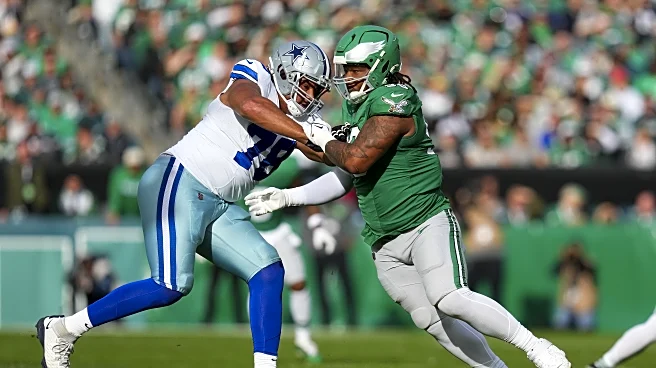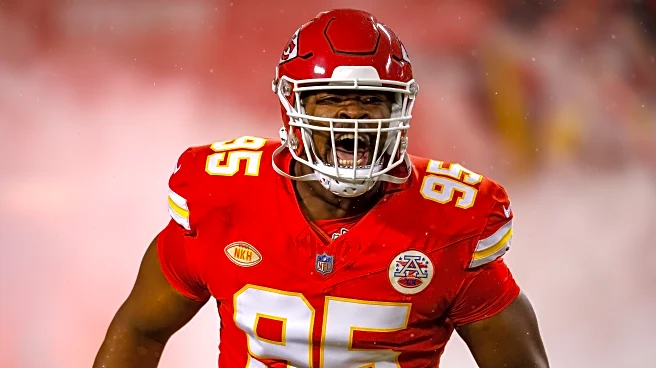What's Happening?
Bleacher Report has released its NFL All-Quarter Century Team, recognizing top players from the past 25 years. Among the notable omissions is Michael Strahan, a former standout for the New York Giants. Despite his impressive career, Strahan received only a few votes, which led to his exclusion from the team. The selection criteria focused on players whose careers predominantly occurred in the 21st century, which may have disadvantaged Strahan, as only eight of his 15 seasons were played after 2000. Other edge-defenders like Terrell Suggs, T.J. Watt, and Dwight Freeney were included, while Khalil Mack and Jason Taylor were also considered.
Why It's Important?
The exclusion of Michael Strahan from the NFL All-Quarter Century Team highlights the challenges of evaluating players whose careers span different eras. Strahan's career achievements, including his significant contributions to the Giants and his record for single-season sacks, underscore his impact on the game. This snub may spark discussions about the criteria used for such selections and the importance of recognizing players who have influenced the sport across multiple decades. Fans and analysts may debate the fairness of the selection process and the recognition of players who have left a lasting legacy.
What's Next?
The release of the NFL All-Quarter Century Team may lead to further analysis and debate among sports analysts and fans regarding the selection criteria and the players chosen. Discussions may focus on the balance between recognizing recent achievements and honoring historical contributions. Additionally, this could prompt a reevaluation of how players from earlier eras are considered in future lists, potentially influencing how sports history is documented and celebrated.
Beyond the Headlines
The omission of Michael Strahan from the team raises broader questions about how sports legacies are preserved and celebrated. It highlights the potential biases in favor of more recent players and the challenges in comparing athletes across different periods. This situation may encourage a deeper examination of how sports history is curated and the role of media in shaping public perception of athletes' careers.












